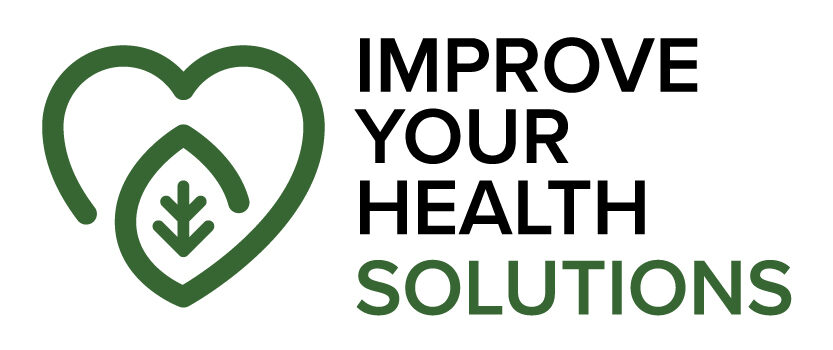Are you tired of back pain controlling your life? What if I told you that recovery isn’t just a distant dream, but a real possibility waiting to be discovered?
Living with persistent pain can feel like an endless battle. I understand the frustration, the sleepless nights, and the moments when simple tasks become overwhelming challenges. But there’s hope. This guide will walk you through powerful pain management techniques that can transform your recovery journey.
Chronic pain relief isn’t about quick fixes. It’s about understanding your body, exploring comprehensive strategies, and reclaiming your life. Together, we’ll explore proven approaches that can help you break free from the grip of persistent pain.
Key Takeaways
- Understand the root causes of chronic pain
- Discover holistic pain management techniques
- Learn strategies for physical and mental healing
- Explore both medical and natural treatment options
- Build a sustainable path to pain recovery
Struggling with Back Pain? Discover a gentle, natural method to relieve pain and restore flexibility—without drugs or expensive therapy.
👉 Click Here to Start Feeling Better Today!
Understanding Chronic Pain and Its Impact on Daily Life
Chronic pain is more than just physical discomfort. It’s a complex issue that affects many areas of life. Knowing how pain works can help manage it better.

The body’s pain response is designed to protect us. Chronic pain causes can be many things. They involve neural pathways that keep sending pain signals even after injuries heal.
The Science Behind Persistent Pain Signals
Pain neuroscience shows that chronic pain is a complex issue. It involves the nervous system, brain, and body working together. Nerve receptors can become too sensitive, leading to ongoing pain.
How Pain Affects Mental and Physical Well-being
Pain and mental health are closely linked. Chronic pain can lead to depression and anxiety. It can also limit physical activity, causing more emotional distress.
Common Misconceptions About Chronic Pain
Many think chronic pain is just in someone’s head. This is a harmful belief. It downplays the real effects of pain on a person’s life.
Break Free From Pain: Essential First Steps to Recovery

Starting your pain recovery journey takes courage and a clear plan. First, create a detailed pain management plan. It should cover both physical and emotional sides of your pain. The first steps to ease your pain might seem tough, but with the right mindset, you can make big strides.
Begin by getting a detailed medical check-up with a pain management expert. They can find out why you’re in pain and make a plan just for you. This first step is key to a successful recovery plan.
Setting realistic goals is vital in your pain relief journey. Break your recovery into small, doable steps. Keep track of your progress and celebrate each win. Healing is not always straightforward, so be patient with yourself.
Think about treating your body and mind together. Add gentle exercises, stress-reducing activities, and better nutrition to your plan. Your pain management strategy should change as you learn more about your body’s healing.
Don’t underestimate the power of mental support in your recovery. Join support groups, think about counseling, and surround yourself with people who get it. They can offer the emotional support you need on your healing path.
Back pain can limit your life—but it doesn’t have to. The Back to Life System offers easy-to-follow movements that work for all fitness levels.
✅ No equipment needed
✅ Just minutes a day
✅ Real relief, real results
🎯 Learn How It Works Now
Natural and Medical Treatment Options for Pain Management
Finding the right way to manage pain can be tough. It’s important to know about the many ways to get natural pain relief and heal fully.
Pain management isn’t the same for everyone. Each person needs to find what works best for them. This means trying different methods to find the most comfort and relief.
Holistic Approaches to Pain Relief
Holistic pain therapies offer gentle yet effective ways to ease pain. Acupuncture, meditation, and yoga can help reduce inflammation and promote relaxation. These methods work by helping the body heal naturally.
Prescription Medications and Their Role
When natural methods aren’t enough, pain medications are key. Doctors can prescribe treatments that block pain signals and give quick relief. Knowing the possible side effects helps patients make smart choices about their pain management.
Alternative Therapies Worth Considering
There are also new ways to manage pain, like biofeedback and cognitive-behavioral therapy. These methods teach patients to control their body’s pain response. They offer long-term ways to manage pain.
Remember, your pain journey is unique. Talking to healthcare professionals can help you create a plan that mixes natural pain relief with medical treatments.
Building a Support System for Long-term Pain Management
Living with chronic pain can make you feel alone. But, you don’t have to go through it by yourself. Building a strong support system is key to managing pain well. Your pain management team is crucial in helping you deal with persistent pain.
Start by joining chronic pain support groups in your area or online. These groups offer a safe place to share, learn, and find emotional support. Hearing from others who get what you’re going through can be very healing.
Family support is also vital. Talk openly with your loved ones about your pain. Teach them about your condition and how they can help you both practically and emotionally.
Your pain management team should work together. This includes doctors, pain specialists, physical therapists, and mental health counselors. Each team member brings their own skills to help you manage your pain well.
Building a support network takes time and courage. Don’t be afraid to reach out and ask for help. With the right support, you can grow stronger and improve your life despite chronic pain.
Lifestyle Changes That Promote Pain Relief and Healing
Living with chronic pain means looking at more than just medicine. I’ve found that changing how we live can really help manage pain and improve life quality.
Exercises that ease pain are key. Activities like swimming, walking, and stretching can make muscles less tight. Start with easy exercises that don’t hurt your body too much.
Nutritional Strategies for Pain Management
Eating right can also help with chronic pain. Foods like salmon, chia seeds, and walnuts have omega-3s that fight inflammation. Eating lots of colorful veggies and fruits gives your body the nutrients it needs to heal.
Optimizing Sleep for Pain Relief
Sleep and pain are closely linked. A regular sleep schedule and a cool, dark room can help a lot. Try going to bed at the same time every night, avoid screens before bed, and use pillows that support your body.
By making these lifestyle changes, you can actively work on managing chronic pain. Remember, small, steady changes can make a big difference in your pain management journey.
Conclusion
Your journey to overcome chronic pain is very personal and changing. It’s not about finding one solution. It’s about creating a plan that fits you.
Managing pain takes time, kindness to yourself, and a focus on your whole health. By using medical help, changing your lifestyle, and trying supportive therapies, you can make a plan that works for you. Remember, every small win is important on your path to healing.
Believe in yourself and your ability to find a pain-free future. Keep working with your healthcare team and your loved ones. Every step you take gets you closer to a life free from pain.
Keep being open to new ideas and changes. Your strength in dealing with chronic pain is key. With the right approach, you can see big improvements in how you feel.





